
6
• Disconnect from the power supply before carrying out any adjustment, servicing or
maintenance
WARNING: Dust generated by using power tools can be toxic. Some materials may be
chemically treated or coated and be a toxic hazard. Some natural and composite materials
may contain toxic chemicals. Some older paints may contain lead and other chemicals. Avoid
prolonged exposure to dust generated from operating a router. DO NOT allow dust to get onto
skin or eyes and do not allow the dust to enter your mouth to prevent absorption of harmful
chemicals. Where possible, work in a well-ventilated area. Use a suitable dust mask and dust
extraction system where possible. Where there is a higher frequency of exposure, it is more
critical that all safety precautions are followed and a higher level of personal protection is used.
Product Familiarisation
1. Speed Controller
2. Motor
3. Power Switch with Lock-Out Cover
4. Handles
5. Collet
6. Dust Extraction Port
7. Plunge Lock Lever
8. Micro Winder
9. Turret Stops
10. Table-Winder Connection Point
11. Depth Stop Lock Knob
12. Safety Guards
13. Baseplate Mounting Knobs
14. Fence
15. Spanner
16. Extended Baseplate
17. Collet
18. Table Height Winder
19. Pivot Mount
20. Brush Caps
Intended Use
Hand-held, mains-powered plunge router used for cutting profiles, grooves, edges and
elongated holes in natural and composite wood, and also stationary installation in the Triton
Precision Router Table, the Triton Workcentre, and other suitable table systems.
Unpacking Your Tool
• Carefully unpack and inspect your new plunge router. Familiarise yourself with all its
features and functions
• Ensure that all parts of the tool are present and in good condition
• If any parts are missing or damaged, have such parts replaced before attempting to use this
tool
Before Use
WARNING: Ensure the tool is disconnected from the power supply before attaching or
changing any accessories, or making any adjustments.
Power switch
See Fig I and II
• When the router is connected to power, the Power Switch with Lock-Out Cover (3) will
illuminate (in both 'on' and 'off' positions).
• The retracting switch cover prevents accidental starting of the router. It must be retracted
before the router can be switched on. The cover will remain open until the router is
switched off
Fitting a collet and router bit
See Fig III
1. Ensure the Power Switch with Lock-Out Cover (3) is OFF and the router disconnected from
mains (the retracting shutter will lock closed)
2. Check the depth stop is fully retracted (see ‘Depth Stop and Turret’) and release the Plunge
Lock Lever (7)
3. Turn the machine upside down
4. Plunge the router to its maximum depth and engage the Plunge Lock Lever to lock the
router in this position
Note: On first use, when you take the router out of the box, the router is in this position
5. Rotate the threaded spindle as necessary to engage the spindle lock
Fitting a collet
1. Place collet onto the spindle so that it engages the screw threads
2. Turn the collet clockwise by hand so that it is fully mounted onto the spindle
Fitting a router bit
1. Loosen the collet sufficiently to insert the router bit. If removing a router bit, use the
Spanner (15) to loosen the collet
2. Insert the router bit fully into the collet, then use the spanner to tighten the collet so that it
holds the bit firmly
3. Hold the body of the machine securely and disengage the Plunge Lock Lever (7). This will
release the collet lock and the lock-out cover of the power switch
Dust Extraction
Dust Port
• The Triton JOF Router is equipped with a Dust Extraction Port (6) for chip extraction above
the cut. It accepts 38mm (1½") O.D. hose, supplied with the Triton Dust Collector (DCA300)
• The hose screws into position via a left hand thread (anti-clockwise)
Optional template guide kit
• An optional template guide kit is available from your Triton stockist
Extended Baseplate and Fence
See Fig IV
• The Extended Baseplate (16) provides greater stability when using bearing-guided cutters
along an edge
• When using the router with the baseplate fitted, place one hand on the long end of the
base, holding it down onto your work, and grip the router handle, furthest away, with your
other hand
To fit the extended baseplate
1. Loosen the Baseplate Mounting Knobs (13) sufficiently so that the bolts (on the mounting
knobs) will be able to engage the keyhole slots in the baseplate
2. Turn the router upside down
3. Push each knob upwards in turn as you slide the baseplate onto the base of the router and
engage the bolts in the keyhole slots on the baseplate
4. Slide the extended baseplate until the bolts locate against the ends of the keyhole slots.
Tighten the baseplate mounting knobs firmly
To fit the fence
See Fig V
1. Loosen the side fence knobs
2. Slide the Fence (14) onto the rails at each side of the baseplate
3. Lock at the required setting by tightening both fence knobs
Notes
• When routing trenches some distance in from an edge, fit the Fence to the long end of
the base
• When performing edge work with a non-bearing guided cutter, fit the Fence to the short
end of the base
• If using a very large diameter cutter it may be necessary to fix wooden blocks to the fence
faces, via the screw holes, to ensure the cutter does not come into contact with the Fence
Operation
Variable speed control
• Router speed settings are not critical. Generally the highest speed which does not result
in burn marks on the workpiece should be used. Where stated, always follow the cutter
manufacturers’ maximum speed limitations.
• Generally, higher speeds are used for timber and MDF, lower speeds for synthetic materials
• Operating at reduced speed increases the risk of damage to the router as a result of
overload. Use very slow feed rates and/or multiple shallow cuts.
• The Speed Controller (15) is marked 1 to 5, corresponding approximately with the speeds
and cutter diameters below. Turn the dial to select the required speed required.
Setting RPM Cutter Diameter
5 21,000 Up to 25mm
4 18,000 25 - 50mm
3 14,500 50 - 65mm
2 11,000 Over 65mm
1 8,000 Use only if burning
925837_Manual.indd 6 18/05/2017 14:31

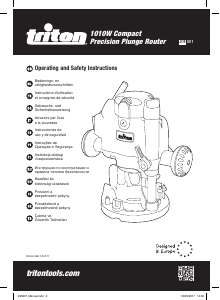


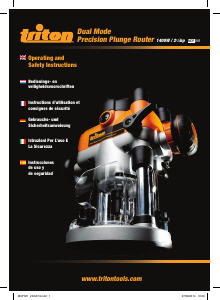
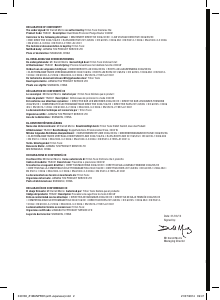
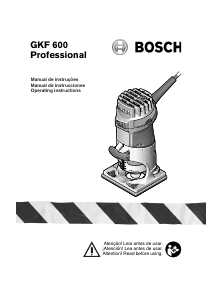
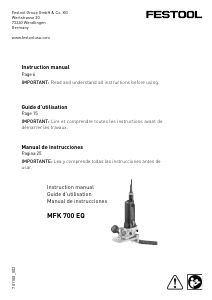
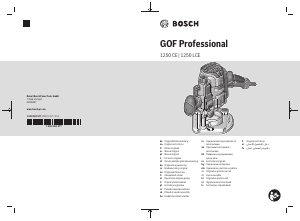
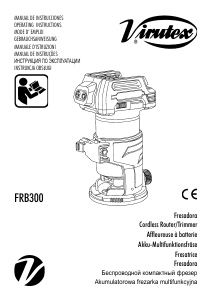
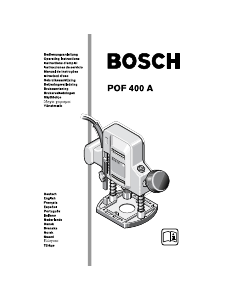
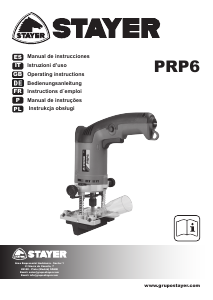
Join the conversation about this product
Here you can share what you think about the Triton JOF001 Plunge Router. If you have a question, first carefully read the manual. Requesting a manual can be done by using our contact form.